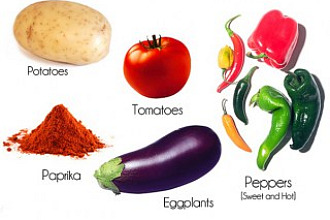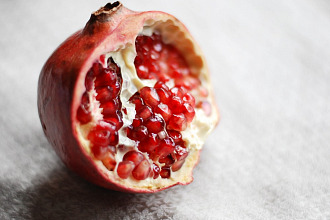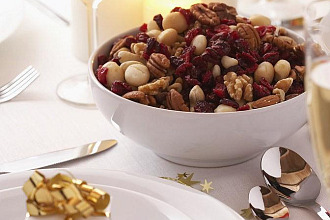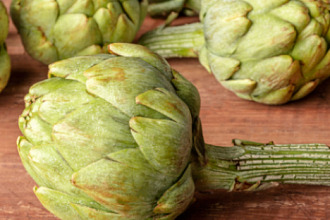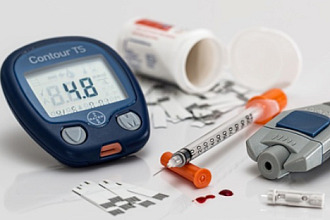Prison researchers found that inmates on death row regularly ordered very unhealthy last meals before their execution. Many of these final meals were a banquet of 7,000+ calories, with this final feast including heaps of unhealthy dishes with oodles of gravies and spices, greasy fried foods and sugary desserts with lots of ice cream. Rarely, if ever, were vegetables requested.1 But, perhaps we should not condemn them for ordering such an unhealthy meal, since high cholesterol or elevated triglycerides were not going to be the cause of their demise.
However, we know that if we were to continue to live on a diet similar to that described above, we would be effectively dying before we need to. To assist us in sustaining a healthy diet, nutritionists have for a long time continued to recommend that we follow the Edenic diet of vegetables, fruits, grains, legumes and a handful of nuts.
More recently, a number of well-known universities that have nutrition departments have looked at what food items would be the best in the general categories just mentioned — here are the conclusions from the last two years.
Lentils
Lentils are one of the earliest food crops domesticated by agrarian farmers and still continue to play an important part in food preparations around our globe. Lentils come in a rainbow of colors to attract our culinary visionary senses with their green, red, brown and yellow varieties. A cup of lentils with the right seasoning can be both an adequate and an economic meal. One cup of cooked lentils has 16 grams of fiber and 18 grams of protein and is full of minerals and vitamins — folate, potassium, phosphorus, B6 and thiamine; it is also a great source of iron, providing nearly 7 milligrams. Try it tonight at supper in a soup or a stew.2
Avocados
Originally discovered in South and Central America, buried with Incan mummies, avocados are now found around the globe. Technically avocados are a fruit in the same family as cinnamon and bay laurel. Interestingly they are what scientists call a climactic fruit, which simply means they can reach maturity on the tree but do not ripen until picked. We appreciate them for their sweet flavor and rich smooth texture, but even more for their high content of monounsaturated fat and a bonus of polyunsaturated fat that helps decrease the risk for heart disease. Just half a large avocado contains 7 grams of fiber and a wealth of nutrients such as vitamins K and C and folate. Use avocados in your diet as a replacement for butter or mayonnaise and as an ideal salad topper.3
Blueberries
It seems that everything on nutrition that you read in a magazine or see on television these days extols the blueberry as the number one fruit to consume. It truly is a super-rich fruit containing high concentrations of antioxidants. According to Tufts University research teams, when blueberries are added to human and animal diets they both have improved cognitive skills and live longer. Like all other berries, blueberries are a low calorie food with one cup having 14 milligrams of vitamin A and nearly 4 grams of fiber. An additional side benefit is that they may boost your good cholesterol [HDL] and lower your systolic blood pressure.4
Garlic
Garlic, or ‘stinking rose’ as the Greeks and Romans named it, offers far more than its distinctive flavor and aroma — it could be a heart saver. Not only is this plant a boon to the cardiovascular system by relaxing the arteries and improving blood flow, it has anti-inflammatory and anti-oxidative effects on the body’s health. Garlic contains vitamins C, B6, selenium and manganese. A few studies have linked this member of the onion family with the potential to lower cholesterol levels and reduce blood pressure. If the ancient Egyptians cherished its ability to help combat general illnesses and fed it to the slaves who built the pyramids in order to improve their endurance, maybe it would be a good item to always have in our kitchen.5
Walnuts
Only in the last two decades has science focused on the health benefits of nuts. Most are tree nuts such as cashews, Brazil nuts, hazelnuts, walnuts, pecans, macadamias and pistachios. Walnuts were among the first tree nuts to be eaten by humans and are the highest in polyunsaturated fats and the only nut containing a significant amount of alpha-linolenic acid, the plant type of Omega-3. Walnuts were used in the 17th century for head ailments and to boost intelligence. However, in our century they also offer impressive heart benefits such as the dilation of blood vessels by two-thirds; also, those who eat them regularly are less likely to develop Type 2 Diabetes.
Other minerals found in walnuts are phosphorus, magnesium, manganese and copper.6
Beans
The chickpea is often referred to by its Spanish name “garbanzo”, which means “small ram” from the description of its shape. Australian researchers found that adults who supplemented their diet with chickpeas had lower levels of the bad cholesterol [LDL], as well as a drop in blood sugar and insulin levels over a six week period. Just half a cup of chickpeas supplies more than 20 percent of the daily value for the B vitamins and folate as well as a number of trace minerals. Chickpeas are also high in both soluble and insoluble fibers. Great for soups, stews, hummus and Indian dishes.7 They’re great in salads, too.
Including these super foods in your diet daily will not only help you avoid chronic diseases, but will give you nutritional vitality, renewed energy and a sharper mind. You could not ask for more!
JUST THE BASICS
Choose whole foods first
Select foods that are full of the ‘good’ stuff (vitamins, minerals, fiber and protein) and deplete from your diet all the ‘bad’ stuff (sugar, salt, saturated and trans fats). Determine to have 80 percent of your diet as close to nature itself. Resolve to eat six cups of vegetables, particularly the green leafy varieties such as broccoli, cabbage, lettuce and five cups of fruit per day in a variety of colors such as yellow bananas, red apples, golden peaches and green pears. This change alone will give you the biggest bang for your nutritional buck.
Read labels
The simplest way to distinguish great food from highly processed food is to note whether it has a label. Tomatoes don’t have a label, but a bag of potato chips has at least one dozen different ingredients on its label.
Stay in your kitchen
The best way to move towards using more whole foods and potentially saving lots of money and increasing your health is by enjoying cooking in your own kitchen. Restaurants tend to use more packaged and processed cuisine. Share food preparation with the whole family by assigning a job to each member, such as stirring, chopping, setting the table, etc. One of the bonuses of preparing foods at home is that you tend to eat more healthfully and weigh less than those who dine out frequently.
Adjust your taste buds
Too many individuals have acquired a diet high in salt and sugar with lots of fat and other additives. Begin slowly to adjust your senses by reducing and limiting these unhealthy and non-nutritious ingredients. An example would be to mix brown rice with white rice, increasing the brown rice portion until you feel comfortable with totally wholesome grains.8
References
- “Good Week For,” This Week, September 14, 2012.
- “11 Healthy Foods to try in 2011,” Tufts University Health & Nutritional Letter, January 2011: pg. 4-5.
- “EN Advocates More Avocados,” Environmental Nutrition, May 2010: p 8. “11 Healthy Foods to try in 2011,” Tufts University Health & Nutritional Letter, January 2011: pg. 4-5.
- “10 foods to Help You Live a Longer, Healthier Life,” Healthy Years, 2011: p. 3.
- “Power Up With Hidden ‘Superfoods’,” Environmental Nutrition, February 2012.
- “Walnuts: Crack Open Daily,” Environmental Nutrition, April 2008: p. 8. “Nuts for You,” Tufts University Health & Nutritional Letter, May 2012.
- “Chickpeas, Garbanzos,” Environmental Nutrition, April 2007.
- “Concepts from Clean Up Your Diet,” Prevention, March 2010.










